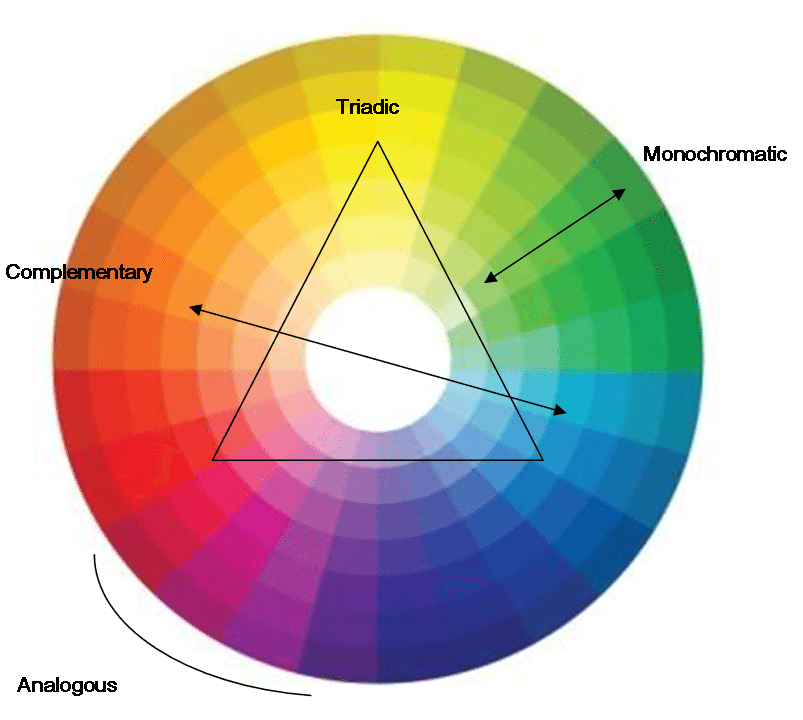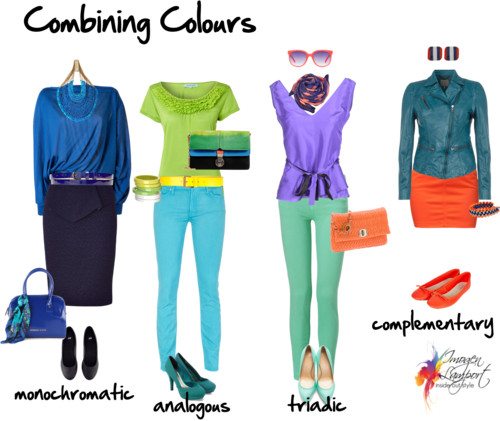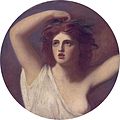In many people’s minds the sources of sexual attraction--the vaunted 'chemistry,' the elusive ‘electricity’--are shrouded in mystery. Indeed, much remains unknown about why two people are attracted to each other. Nevertheless, in recent decades science has revealed many secrets about heterosexual attraction. We know for example that women around the world are attracted to symmetrical male bodies and faces, to the physical manifestations of
testosterone (a strong chin, broad shoulders, deep voice), and to a man’s social status,
intelligence, and sense of
humor. We know that men all over the world are attracted to signals of youth in a female (smooth skin, lush hair, generous lips), to the 'hourglass' figure (a waist to hips ratio of 0.7) and so on. Now, many studies point to another fundamental source of attraction: the color red.
Granted, the connection is not entirely surprising. Red is commonly associated with passion and eroticism--just think of the Red Light District, red roses, red lipstick, red wine, the 'Lady in Red'….

Do you have a license to drive?
In ancient societies, red often served as a symbol of status, power, and virility--the masculine traits considered sexy by women. Throughout history, kings, cardinals and judges were often red-robed. Way back in the middle ages, the symbol of the Christian church was a red cross. In ancient Rome, leaders were called
coccinati – ‘wearing red.’ Even today, the 'power tie' is red. Red Baron is a sexy macho brand; someone super sexy is ‘red hot;’ a red Corvette is practically a
sex toy.
These anecdotes and cultural associations are fascinating but inconclusive. In recent years, a number of experimental studies have set out to dig deeper and elucidate the
nature and mechanisms of the association between the color red and sexual attraction.
Cumulatively, the research shows that the effect of the color red is significant, unique, and that it operates at a sub-conscious level. Red is experienced as attraction booster by both sexes, although the mechanisms that mediate the effect of red on attractiveness ratings appear to differ for men and women.

It's all in the color of his swimming trunks
Studies have shown that for women, the color red enhances a man’s attractiveness. In 2010, the researchers
Andrew Elliot, Daniela Niesta Kayser and colleagues at the University of Rochester in New York published a series of experiments conducted in four different countries. The researchers told participants that the studies explored their “first impressions of others,” and avoided mentioning color and sex. Half of the participants, randomly assigned, were exposed for five seconds to a picture of a man on a red background. The other half saw that image on a white background (another experiment manipulated the man's shirt color, with similar results). Participants rated the attractiveness of the man in the picture. The results showed that women ranked the man as more attractive when he was presented against the red backdrop. The researchers then ran the same experiment on men (who were asked to rate the same man against these color backgrounds) and found differences in color did not affect ratings. They took this finding as support for the contention that red carries sexual messages, not merely aesthetic ones. Further experiments by this
team have shown that the color red also increased attractiveness rating of the men in the eyes of women compared to other colors such as gray, green, or blue.
Another experiment by these same researchers showed that the man in red was rated as high in social status, and with higher potential for success. Color, however, had no effect on ratings of the man’s likability, agreeableness, or sociability. Based on this finding (and an already existing robust literature on the attraction of male status) the researchers concluded that the link between red and sexual attractiveness is facilitated through the color’s link to higher male status.
But what about men’s reactions to the color red? Is red on a woman perceived as sexual bait by men? The research answer in a word: Yes.
In an earlier series of experiments
Andrew Elliot and Daniela Niesta(2008) found that men reported higher sexual attraction toward a woman dressed in red compared to women dressed in other colors. Men also expressed the intent to spend more money on a date with a woman in red. In a 2012 study involving 272 restaurant customers, researchers
Nicolas Guéguen and Céline Jacob found that male patrons gave higher tips to waitresses wearing red over waitresses wearing white. Providing further evidence for the existence of a red-sex association,
Sascha Schwartz and Marie Singer of the University of Dortmund in Germany showed that 'red effect' holds for young women but not for elderly women. (The age of the men doing the rating, however, did not matter: young and old men alike ranked young women in red as the most attractive).
So, red appears to be associated in men’s mind with female sexual attractiveness. But what mechanisms underlie such a link? In a set of studies published last year, the researchers
Adam Pazda, Andrew Elliot and Tobias Greitemeyer found that men perceive women in red as more sexually receptive, and that they perceive sexually receptive women as more attractive.
Other studies have supported these findings. A study by French researcher
Nicolas Guéguen also found that men attributed higher levels of sexual readiness to women wearing red.
Daniela Niesta Kayser, Andrew Elliott and Roger Feltman recently published a series of experiments examining the effect of 'woman in red' on the behavior of heterosexual men. They found the men directed more intimate questions toward the 'woman in red' (intimate questions are a known indication of increased sexual interest). In addition, men chose to sit closer to the woman in red than to a woman dressed in a different color (blue, in this experiment). The effect remained significant even when the researchers statistically controlled for the potential impact of other factors, such as mood, general arousal, and the participants’ self-rating of attractiveness.
Overall, it appears that men perceive a woman in red as signaling readiness for sex. Female sex-readiness is attractive to men, partly because it is a relatively scarce resource.

In taupe she's a wallflower
This tendency of men to see women dressed in red as signaling sexual availability and interest is not random or delusional.
Andrew Elliot and Adam Pazda, conducting research on the Internet, published a study last year showing that women, in their profile pictures, wore red more often on hook-up sites than on marriage-oriented
dating sites. On dating sites overall, women expressing an interest in casual sex chose to present themselves dressed in red much more often than women who expressed an interest in serious relationships only. According to the results, women dressed in red are more than twice as likely to describe themselves as interested in casual sex than women wearing any other color.
Astonishingly, the link between the color red and sexual attraction appears to be
subconscious. In all the studies cited above, during debriefing, the overwhelming majority of the participants failed to guess the purpose of the experiments, and none reported that color had been a factor in their rating decisions.

The sources of the link between sexual attraction and red color are not entirely known. In the more recent historical context, it is likely that the effect is learned through conditioning, social traditions, and acquired habits. In the more distant context, most researchers believe that the source of the connection lies somewhere in our evolutionary past. After all, the color red is commonly used in the animal kingdom to express sexual power and readiness. Among many species, the prominent, dominant male will manifest the brightest red colors. Among our relatives the primates, red often signifies fertility and sexual readiness. Female baboon and chimpanzee, for example, make public their ovulation by displaying the redness on their genitals and chest. Among humans, sexual excitement is often associated with redness in the body’s erogenous areas, and with facial
blushing. Robust physiological processes such as strong blood flow and high testosterone levels (in men) are required to produce a reddish skin appearance. Thus, the color itself may have become over evolutionary time a proxy signal for reproductive potential.
This research area has not, of course, been exhausted. There is more to learn about the color red; for example, why is it also often associated with danger,
anger, and violence (red flag, red light; red card; red alert; seeing red)? We do not yet know enough about the human sexual response patterns to other important colors, such as black (which is by the way, the most common dress color on
online dating sites). We do not know enough about the 'red effect' in the context of uniquely contemporary social milieu (for example, how do male employees respond to a red-clad female boss?).
It is also clear of course that we cannot deduce from these findings that a woman dressed in red is necessarily available or interested in sex, as it is impossible and inappropriate to conclude that a man in a red tie is necessarily a wealthy boss. There are many reasons, unrelated to sex, why someone may decide to wear red (or not). Maybe red just looks good on you. Maybe it’s of the height of fashion this winter. Perhaps this is the only clean shirt you found in your closet. Maybe you are a Red Wings fan.
We may, however, be able to conclude (carefully) from the findings that the color red constitutes a unique, significant and subconscious sexual signal, rooted in our biological heritage. Beyond its aesthetic value, red also carries psychological meaning, and it has the potential to affect our behavior and our sexual feelings
 Analogous – 2-3 colors next to each other on the colour wheel.
Analogous – 2-3 colors next to each other on the colour wheel.


_3.jpg)





















inShare